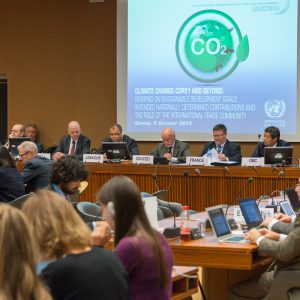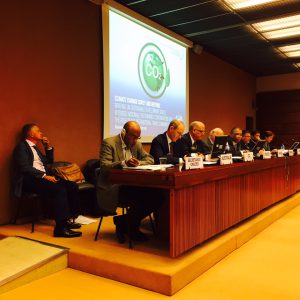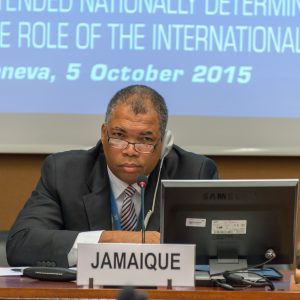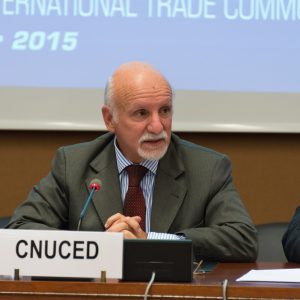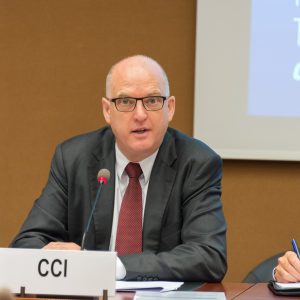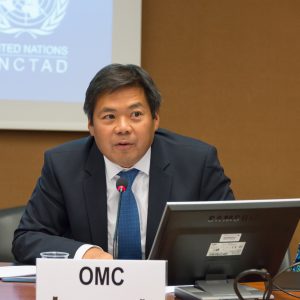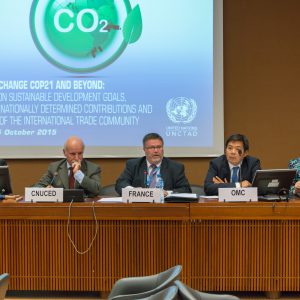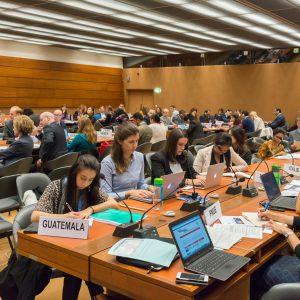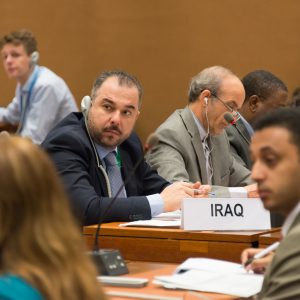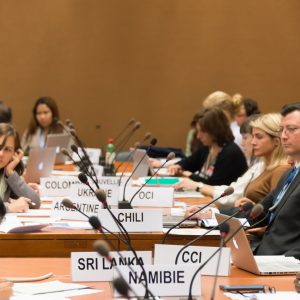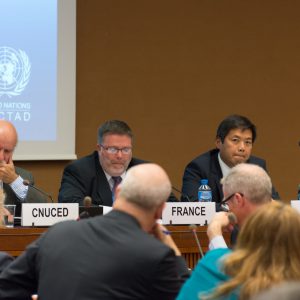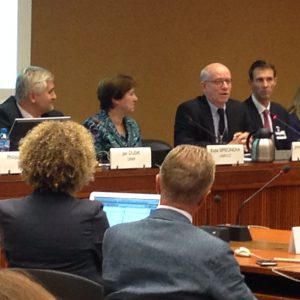Event
Climate Change COP21 and Beyond: Briefing on SDGs, INDCs and the contribution of the international trade community
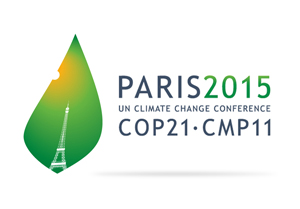
05 Oct 2015
10:00–16:30
Organization: Geneva Environment Network
UNCTAD and ITC join with the Geneva Environment Network to conduct a briefing on SDGs summit, climate change COP21 and contribution of the international trade community.
About this Session
The briefing took place on 5 October, in room XXIII, covering:
-
The outcomes of the Global Goals summit and their relevance to COP21
-
Preparations for COP21
-
A tour de table among the three trade agencies followed by a number of interventions by participants focusing on how the international trade community can support the climate negotiations on the way to Paris and, especially, in the implementation phase
-
Assessment of the Intended Nationally Determined Contributions (INDCs)
Background on trade and COP21
In November 2014, in cooperation with the UNFCCC, WTO and ITC, UNCTAD launched a series of briefings, which will culminate in a side event at COP 21 in Paris.
The series has been prompted by the realization that the development agenda is an increasingly important component of climate change mitigation, which is recognized by the IPCC under the term co-benefits – complementary benefits. Examples of such co-benefits include economic growth and development, poverty reduction, and improved air quality, health, energy security, job creation, biological diversity and water management. Trade has an important role to play in leveraging the various co-benefits.
The first briefing, held in February, on the margins of the ADP (Ad hoc Working Group on the Durban Platform for Enhanced Action) negotiations in Geneva, brought into focus linkages among the three major negotiating tracks: the climate negotiations; the intergovernmental negotiations on post-2015 development agenda; the Doha Round negotiations in the WTO.
In all three, trade serves as an enabler in the long run, ensuring the implementation of any eventual agreement is inclusive within across countries.
The current briefing is meant as a stepping stone towards a side event, which will bring together the three trade agencies and their UN and non-partners. The event, entitled: “Leveraging the co-benefits: the role of markets and trade” and scheduled for 9 December.
Read more on UNCTAD and ITC websites.
Background in INDCs
It was decided at UNFCCC COP19 in Warsaw, that the parties would “initiate or intensify domestic preparations for their intended nationally determined contributions” so that they can be submitted well in advance of the Meeting of Parties to the UNFCCC in Paris. Intended Nationally Determined Contributions (INDCs) are offers that countries put on the table ahead of the Paris climate talks, outlining actions they are willing and able to take to address climate change. INDCs put forward by countries will form a key input to the negotiations leading towards the expected Paris climate agreement.
COP20 reiterated the invitation to each Party to communicate to the secretariat its intended nationally determined contribution well in advance of COP21, in a manner that facilitates the clarity, transparency and understanding of the INDC (as detailed in paragraph 14).
All INDCs submitted by countries are available on the UNFCCC website. As of 1st October, 146 parties have have posted their INDC on the UNFCCC INDCs submission portal.
Agenda
10:00-10:15
Opening
Partnership in the run-up to COP 21, Guillermo VALLES, Director, DITC, UNCTAD
Preparations for COP 21: the host country perspective, Philippe RAMET, Counsellor, Mission of France
10:15 – 13:00
Session 1: What can the trade community do to bring together the two frontiers of sustainable development and climate policies?
• SDGs, climate change and trade: complimentary benefits. Guillermo VALLES, Director, Division on International Trade in Goods and Services and Commodities, UNCTAD
• The role of markets. Anders AEROE, Director, Market Development Division, ITC
• The role of the multilateral trading system in ensuring policy coherence, Aik HOE LIM, Director, Division on Trade and Environment, WTO
• Linking SDGs and INDCs, Katia SIMEONOVA, Programme Manager, Mitigation, Data and Analysis, UNFCCC
• Plurilateral negotiations on environmental goods and services, Andrew MARTIN, Counsellor, Mission of Australia to the WTO
Discussion
13:00-14:00
Light lunch (sandwiches, fruits, coffee and tea)
14:00-16:30
Session 2: Climate Policies: Assessment of Intended Nationally Determined Contributions (INDCs)
• Introdcution: Jan DUSIK, UNEP Regional Director for Europe (moderator)
• Host Country perspective: Philippe RAMET, Counsellor, Mission of France
• Perspective of UNFCCC: Katia SIMEONOVA, Programme Manager, Mitigation, Data and Analysis, UNFCCC
• Preliminary assessment of INDCs: John CHRISTENSEN, Head, UNEP DTU
• Inside the INDCs submissions and analysis: Jonathan GRANT, Director, Sustainability and Climate Change, PwC and Laura MERRILL, Senior Researcher, IISD
Question & Answer Session
Concluding remarks Jan DUSIK, UNEP Regional Director
Discussion
Session 1
UNCTAD and ITC coordinated a first session dedicated to what the trade community can do to bring together the two frontiers of sustainable development and climate policies.
Address by Anders Aeroe, Director, Division of Market Development, ITC
Session 2
The afternoon session, coordinated by the Geneva Environment Network, focused on the Intended Nationally Determined Contributions (INDCs).
As of 1st October 146 countries (all developed countries under the Convention and 104 developing countries), representing almost 87 percent of global greenhouse gas emissions, have submitted their intended national climate action plans to the UNFCCC Secretariat. UNFCCC Executive Secretary has highlighted this Unprecedented Global Breadth of Climate Action Plans Ahead of Paris.
Various stakeholders urge the others, to do so before the climate change conference in Paris. Climate change is a global problem, and therefore, universal participation in a new climate change regime is crucial. A clear, transparent and understandable communication of INDCs is crucial. We all need to know what our partners are doing and understand the ambition behind the numbers. This gave the opportunity to Jan Dusik, chairing the session, to mention Switzerland, supporting the Geneva Environment Network, and the session of the afternoon.
Jan Dusik said that the self-determination of countries in setting their national emission reduction targets has proven to be an enabling factor for Parties to actively engage in combating climate change. The large number of countries participating in this international process demonstrates impressively that a global effort to combat climate change is possible. We very much value the effort of every country that has communicated its INDC.
While each of us knows his or her country best, we must ensure, that self-determination is accompanied with common international elements so that the efforts sum up to a global response to climate change. Emission reduction efforts of all Parties need to be clear, quantifiable and include an unconditional part. This is important to create the trust among Parties, for aggregating the planned emission reductions to know where we’re heading towards and in order to collectively step up ambition over time.
Jan Dusik also mentioned that we must set common principles and rules. Firstly, all Parties are to progress in their efforts to reduce greenhouse gas emissions over time. There is no room for backsliding from where we are. Secondly, all Parties are to strive for absolute economy-wide emission reduction targets as soon as possible. Thirdly, a robust transparency system is crucial to make sure Parties demonstrate the implementation of the announced efforts and to continuously learn from each other and raise their level of ambition.
We still have to master the adoption of a robust international regime around the INDCs in Paris. One that will last, that will foster transformation to low carbon and resilient economies and societies and that will foster collective increase in global ambition.
Philippe Ramet from France hightlited the good collaboration with Peru, as France will only take the presidency of the COP at the end of November, an example of developed and developing country working together. There will be no success in Paris if we do not implement accordingly. He mentioned the Paris Action Agenda – all non-state actors to build and participate to this collective conference.
France wants to create a Paris Alliance for Climate, with four main pillars:
- The first one is the universal and legally binding agreement. This agreement will symbolize the willingness of our global worldwide society to commit itself to building a new global economic model in order to maintain greenhouse gas emissions below 2°C.
- The second pillar is INDCs. INDCs have to be published before Paris Conference, to be integrated there. INDCs present the national commitments on mitigating greenhouse gas emissions.
- The third pillar is financing. Private sector commitment is fundamental.
- The last pillar is the Lima-Paris agenda, also called the agenda of solutions. The goal is to involve all the actors and to create a collective effort in order to change our global society. In Paris, NGO’s, the private sector and other actors will be able to showcase their positive solutions to address climate change
Katia Simeonova from UNFCCC mentioned the strong pledges to Paris agreement to combat climate change in New York last week. The new climate agreement will inspire nations towards progressive efforts and transformation of global economy. To achieve this mission:
a) Articulate a long-term vision
b) Informed by science, collectively take stock of progress to the ultimate objective
c) Adjust contributions upwards over time, role of finance and other forms of co-operation
INDCs or national plans to define national goals, programmes and policies. In Paris, they must:
a) Recognize the first set of INDCs which set a floor not a ceiling of ambition
b) INDCs to be regularly improved upon over time in a measurable and transparent manner based on science
Climate finance to ensure shifts in and scale of investments that are necessary to accelerate global transformation
a) Clarity on finance and pathway to USD 100 billion
b) Report by the GCF and SCF biennial assessment of financial flows and MRV of finance
c) Concrete package for LDCs and SIDS
Action agenda to showcase the groundswell of action by Parties, subnational authorities, private sector and civil society to encourage greater ambition
a) Actions by Parties that are scalable and replicable, role of support
b) Recognizing and catalysing actions by non-state actors
Governments to work in lead up and during COP21 in Paris on the backdrop of the most climate friendly conditions the world has seen:
– Example of the policy support for clean energy that shows dramatic increase
– Distinct trend of passing climate legislation
Number of countries submitting INDCs as of 2 October: 146 countries, 75% of convention parties, all major economies covered.
John Christensen of UNEP DTU spoke about the center analysis in preparting the GAP report and the INDCs assessment, not focusing on their own methodology, but also assessing other people’s research. Experts come up with median range of estimates. He explained that if action had been taken before, starting in 2010 for instance, lowering emissions wouldn’t cost as much as they will to achieve our targets. It has also become more risky.
UNEP has with GEF funding provided financial support for 35 countries preparing their INDCs. Technical assistance from UNEP STU to 32 of these countries. Current INDCs won’t get us to our 2 degree Celsius global temperature target. Big gap on the graph. The Accelerator Platform was established to support specific sector-based energy efficiency accelerators.
Johnathan Grant from PwC presented the PwC CEO survey done last summer. CEOs have shown to think in more short-term ways instead of long-term. Achieving the INDCs will require:
- A step change in effort
- A massive shift in investment
- Innovation in financial services
When analysing data, the focus is on carbon intensity and how it changes relative to GDP growth. Graphs show that emissions are flat in Australia if the economy grows at a rate of 2.8% per year.
Implications of INDCs for business: diverting away from coal, low carbon infrastructure investment, shift in financial flows to low carbon infrastructure from high carbon infrastructure.
Laura Merrill from IISD focused on the energy sector reform and fossil fuel subsidies. IISD put a report together last year looking at impact and opportunity of fossil fuel reform to help fund SDGs. Why? Because of the size of these fossil fuels. Fuel subsidies are outdated, they keep fossil fuels low which makes no sense if we want to reduce our emissions. Instead they need to be taxed to obtain revenue which will go to cleaner forms of energy. Either countries can work at a domestic level or use that money to help financing initiatives internationally like those discussed by Katia earlier. We’re focusing on consumer subsidies. Three pillars to consumer subsidies: getting the prices right, building support for reform, and managing the impacts of reform. Important to work with countries to support their INDCs.
Documents
- Programme
- Presentation Katia Simeonova, UNFCCC
- Presenation John Christensen, UNEP
- Presentation pwc
- Presentation Laura Merrill, IISD

